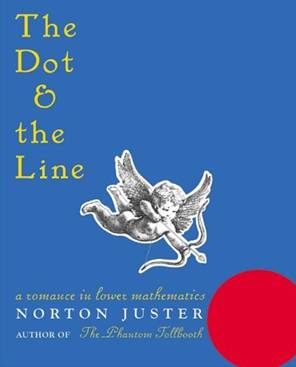The Dot and the Line (2005)
A Romance in Lower Mathematics
for Narrator and Orchestra or Chamber Ensemble (with optional visual images)
Text and Illustrations by Norton Juster
Duration: 20 minutes
Orchestra: Narrator; 2(pic)222/4231/timp.2perc/hp.pf/str
Chamber: Narrator/flute/clarinet/percussion (2 players ad. lib.) /harp/piano/violin/cello
Visual images by the author (included with rental materials)
Orchestral version commissioned by the Dallas Symphony and Carnegie Hall
Dallas Premiere, May 25, 2012
Jamie Bernstein, Narrator; the Dallas Symphony; Richard Giangiulio, Conductor
New York Premiere, October 14, 2017
John Lithgow, Narrator; Orchestra of Saint Luke’s; Edwin Outwater, Conductor
Chamber version commissioned by Voices of Change
Premiere Performance May 1, 2005
Fred Curchack, Narrator; Voices of Change; Lawrence Loh, Conductor

Review:
The work is scored for narrator, chamber ensemble and visual images, and is absolutely marvelous - funny, clever and astonishingly musical. If this does not deserve to be a short segment on PBS, nothing does...had the audience laughing out loud...glorious music.
Christopher Hyde,
Portland Press Herald
Robert Xavier Rodríguez, a superb composer who writes in a highly accessible yet fresh musical voice, is one of our…musical treasures. His mastery of the craft of composition is evident in all of his works…Rodríguez gleefully took on [a chamber] setting of [Norton] Juster's The Dot and the Line: A Romance in Lower Mathematics and happily revisited it for this expanded [orchestral] version. This is one of those rare children's books that can be equally enjoyed by adults. The text actually exists on two levels at once, and everyone in the audience on Sunday, young and old, was enchanted…This is a piece that, while excellent for its original purpose of being on a family concert, would also fit on a regular subscription concert without being out of place. Its profound message is presented with charm and grace… Having the artwork from the book projected above the orchestra was a big help. It is eloquent in its own right, and the complex geometrical drawings that the Line presents at the height of his accomplishment are a wonder to behold.
Gregory Sullivan Isaacs, TheaterJones.com
Program Note:
The Dot and the Line, A Romance in Lower Mathematics for narrator, chamber ensemble and visual images was commissioned by the Voices of Change ensemble with support from the National Endowment for the Arts and other donors. A version for full orchestra was commissioned by the Dallas Symphony and Carnegie Hall. The work is based on Norton Juster’s classic 1963 illustrated book of the same title. Rodríguez has previously written A Colorful Symphony (1987), for narrator and orchestra, based on a chapter from Juster’s best-known work, The Phantom Tollbooth (1961). Rodríguez’s musical version is the first multi-media treatment of The Dot and the Line since the academy-award-winning 1965 animated film made by Chuck Jones, the celebrated producer of such cartoon characters as Tom and Jerry, Pepe LePew, Road Runner and Wile E. Coyote.
The text of The Dot and the Line concerns “a sensible straight Line” who is “hopelessly in love” with a Dot. The Dot, meanwhile, “only has eyes for a wild an unkempt Squiggle.” The Line, however, learns to bend in new and dazzling ways and, in doing so, triumphs. The music represents the three characters through a series of leitmotifs which are developed throughout the work: quick, repeated notes for The Dot; scales or glissandos for The Line; and a primitive, repetitive motive accompanied by dissonant clusters for The Squiggle. The instrumental writing is virtuosic, with prominent soloistic passages for the instruments in timbral pairs: flute with clarinet, violin with cello, harp with piano, vibraphone with crotales. The percussion writing is particularly colorful, including such non-traditional sounds as ratchet, slide whistle, siren, flexatone, police whistle, whip, cowbells, the jawbone of an ass and lion’s roar.
Rodríguez employs three classical quotations: a motif from Wagner’s opera Tristan and Isolde (as the narrator, at the opening, describes The Line’s unrequited love for The Dot) and two fragments from keyboard works of J.S. Bach: the Fugue in E Minor from The Well-Tempered Clavier, Book I and the Toccata in E Minor (one blending into the other at the mention of the word “erudite”). The composer also includes a comical version of a fragment from his Vaudeville-based opera, The Old Majestic (1988), as The Squiggle says, “Hey, have you heard the one about the two guys…” The quotations merge with Rodríguez’ characteristic “richly lyrical” (Musical America) musical style: “romantically dramatic” (Washington Post) and full of “the composer’s all-encompassing sense of humor” (Los Angeles Times).